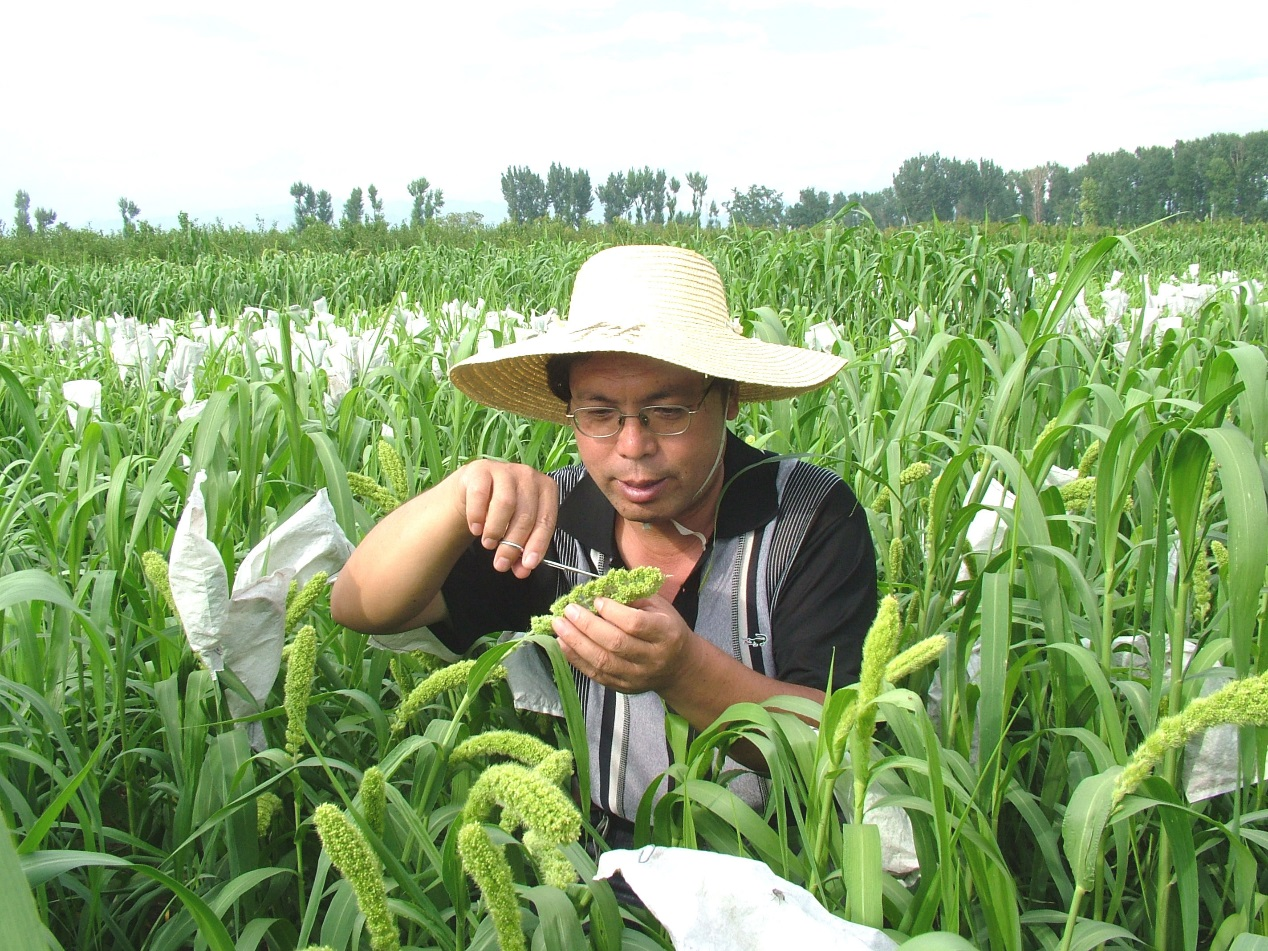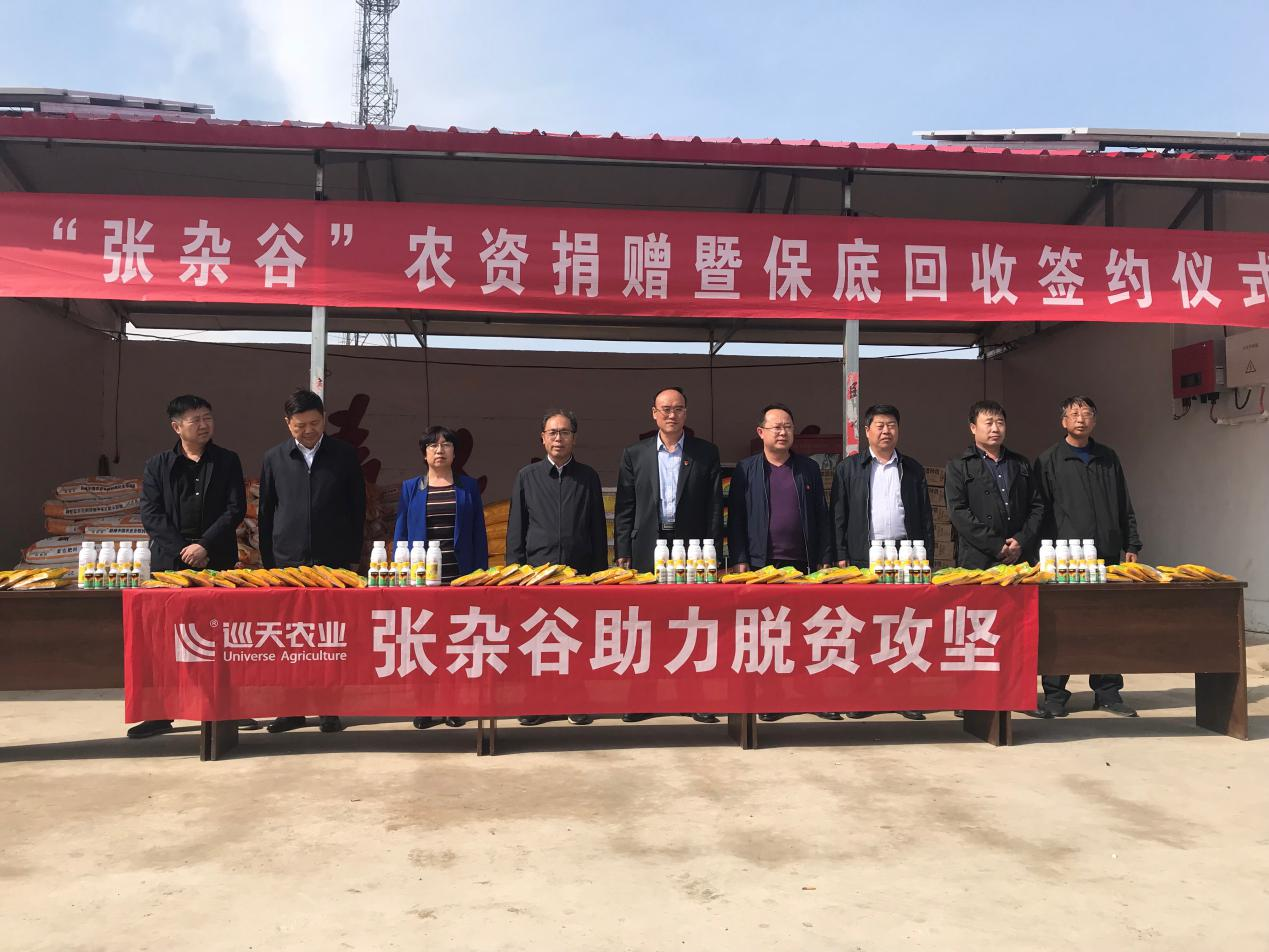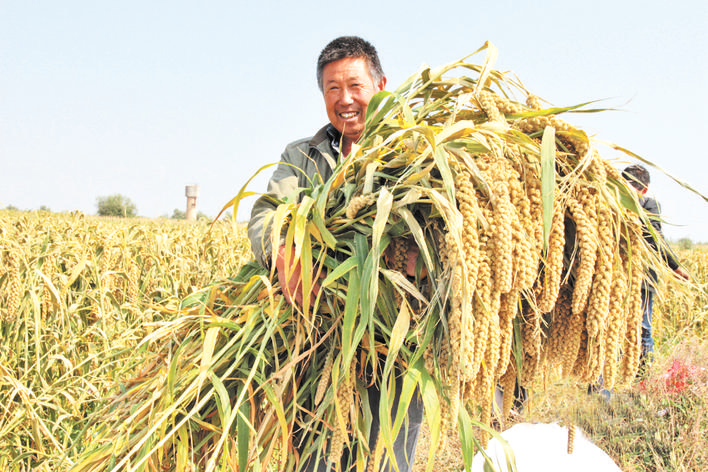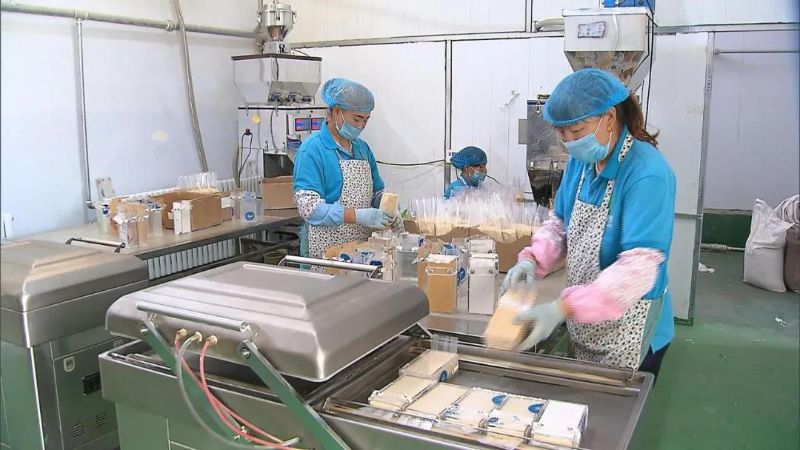Millet is a major staple food crop in the arid, hilly, and mountainous areas of northern China. Commonly consumed in the past and cultivated in the country for thousands of years, millet and other coarse grains were eventually displaced by wheat to a large degree in the region but have been becoming more popular in recent years as consumers look to alternatives to refined grains and seek greater variety in their diets.
 Zhao Zhihai, creator of a group of high-yield, drought-resistant foxtail millet hybrids known as Zhangzagu, breeds the crop. (Photo courtesy of Zhangjiakou Academy of Agricultural Sciences)
Zhao Zhihai, creator of a group of high-yield, drought-resistant foxtail millet hybrids known as Zhangzagu, breeds the crop. (Photo courtesy of Zhangjiakou Academy of Agricultural Sciences)
After more than 30 years of dedication and research, Zhao Zhihai, director of the Zhangjiakou Academy of Agricultural Sciences (ZAAS) Millet Research Institute, created a new, high-yield, drought-resistant group of foxtail millet hybrids known as Zhangzagu. Millet yields in northern China’s arid and semi-arid regions increased from 200 to 300 kg per mu to 400 to 600 kg per mu once it began being grown in them, and an international record of 811.9kg per mu (0.067 ha) was even set. Zhao also devised and disseminated standardised millet cultivation techniques that simplify the production process, reduce manual labour requirements with agricultural machinery, and increase efficiency and productivity.
Situated in northern China in southwest Yangyuan County, Zhangjiakou City, Hebei Province, Xiaozhuang Village is full of low-quality, saline-alkali land, which is not suited to most types of large-scale farming. In the past, the people who live there mostly grew corn and sunflowers, but the endeavours did not result in much income. There were 175 of Xiaozhuang’s 465 households registered as impoverished, and almost half of the village’s working-age population had left the area for better-paying work elsewhere.
In March 2018, Zhao and his team began conducting field investigations in Xiaozhuang after being invited by a poverty alleviation team that the Department of Science and Technology of Hebei Province had dispatched to the village. The team conducted a comprehensive analysis of factors relevant to agriculture in the area, such as precipitation and soil composition, and suggested the villagers grow Zhangzagu instead of corn. Seed, fertiliser, pesticide, and small-scale agricultural machinery was donated to participants; training has been provided, and purchase contracts stipulating a guaranteed sales price of RMB4.6 per kg of unprocessed millet were signed before cultivation began.

Xiaozhuang Village committee members prepare to sign purchase contracts with residents who take part in a poverty alleviation project that was designed to boost incomes through the pursuit and development of a Zhangzagu hybrid millet value chain during a ceremony held in the village in April 2018. Seed, fertiliser, herbicide, and other agricultural supplies were also donated to participants at the event. (Photo courtesy of the Zhangjiakou Academy of Agricultural Sciences)
Zhao has been busy explaining the nature of saline-alkali land to Xiaozhuang’s residents, teaching them relevant cultivation methods, and addressing any problems that occur every April since 2018 because it is the best time to sow Zhangzagu. Participants grew the hybrid millet on more than 700 mu of land, which made it possible for everyone who had been impoverished to escape from poverty within the year, and across approximately 1,000 mu of land in 2019, or almost half of the arable land available in the village, and continued to do so thereafter. Increasing numbers of residents have been improving their lives and becoming more prosperous as they have gotten involved with the industry.

Xiaozhuang resident Qiao Jun poses with an armload of freshly harvested Zhangzagu hybrid foxtail millet. (Photo courtesy of the Zhangjiakou Academy of Agricultural Sciences)
Qiao Jun, the first person in Xiaozhuang to participate in its Zhangzagu project, noted that the grain has made it possible for locals to increase their annual income from a little over RMB500 per mu to more than RMB1,500 per mu on average since they began growing it. The poverty alleviation officials stationed in the village also helped them build a factory capable of milling 2,500 kg’s worth of the grain per day, sorting the output photoelectrically in order to improve quality and remove any defects or contamination, and packaging it. The packaged products that are produced can be sold at RMB12 per kg and thus effectively increase added value.

Workers pack Zhangzagu hybrid foxtail millet on a production line. (Photo courtesy of the Zhangjiakou Academy of Agricultural Sciences)
“I have become the head of the millet processing factory and earn RMB30,000 a year,” Qiao mentioned in October 2020. “We have also registered a trademark for our millet, which functions like an ID card for our brand and corresponding value-added processing. Our products have become very popular and are sold to customers in more than 20 provinces in China.”

For more information, please contact WFP China COE (wfpcn.coe@wfp.org)
Category
Hybrid Millet Enables Impoverished, Saline-Alkali Xiaozhuang Village to Transform into Lush Valley of Prosperity
Contributor
Hybrid Millet Enables Impoverished, Saline-Alkali Xiaozhuang Village to Transform into Lush Valley of Prosperity
Country
Story

